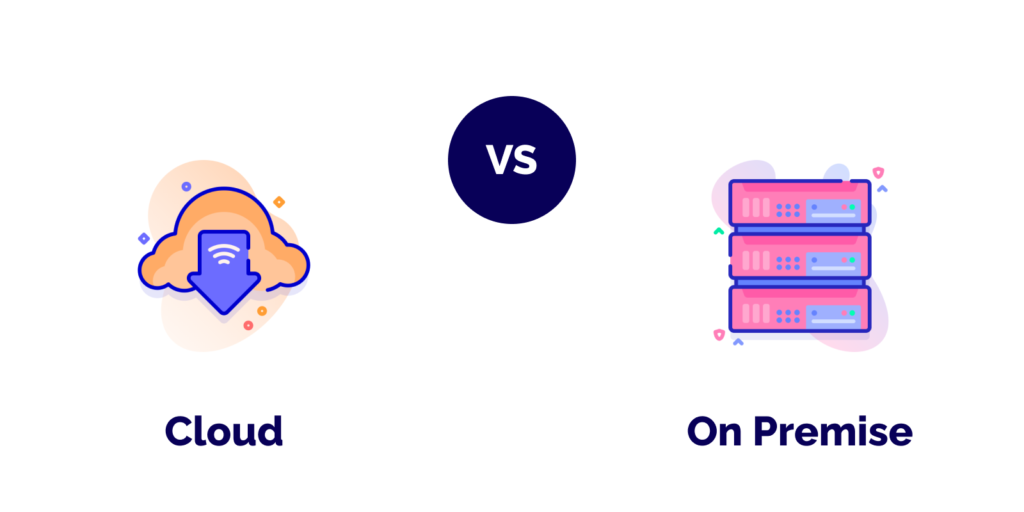Cloud vs. On Premise: Making the Right Data Platform Choice for your Business.
Navigating the Data Platform Dilemma: Cloud vs. On-Premise.
In today’s data-driven world, businesses face a critical decision that can significantly impact their success: choosing between cloud-based and on-premises data platforms. Each option comes with its own set of advantages and disadvantages, and understanding the differences can help organizations make an informed choice.

Flexibility and Scalability
Cloud-based data platforms offer unmatched flexibility and scalability, allowing businesses to scale their resources up or down as needed. This is ideal for organizations with fluctuating workloads or those experiencing rapid growth. On the other hand, on-premises setups can be less flexible, requiring upfront hardware investments and often leading to resource constraints during peak usage periods.
Cost Considerations
Cloud solutions typically follow a pay-as-you-go model, enabling businesses to pay only for the resources they use. This cost-effectiveness can be particularly advantageous for small and medium-sized enterprises (SMEs) with limited budgets. Despite these advantages, on-premises solutions involve significant upfront costs for hardware, software licenses, and ongoing maintenance. This setup may be more suitable for large enterprises with predictable workloads and substantial financial resources.
Security and Compliance
Cloud providers invest heavily in security measures, employing advanced encryption, multi-factor authentication, and constant monitoring. Reputable cloud platforms often comply with industry standards and regulations, which can ease the burden of ensuring compliance for businesses. On the other hand, on-premises setups provide businesses with direct control over their data security, but this also means they bear full responsibility for implementing and maintaining robust security measures. This can be resource-intensive and may require specialized expertise.
Accessibility and Collaboration
Cloud solutions offer easy accessibility from anywhere with an internet connection, facilitating remote work and enabling collaboration among teams regardless of geographical locations. Real-time data sharing and collaborative analytics are key advantages. However, on-premises setups may require virtual private networks (VPNs) for remote access, potentially limiting collaboration and causing delays in decision-making.
Performance and Latency
While cloud providers strive to offer high-performance services, data transfer and processing can be subject to internet speeds and potential latency issues. Organizations with large data volumes and demanding real-time analytics may face performance challenges. On the flip side, on-premises solutions generally offer low latency and faster data processing since the infrastructure is physically located within the organization. This is critical for time-sensitive applications.
Maintenance and Support
Cloud providers handle infrastructure maintenance, software updates, and support, freeing up businesses from these responsibilities. This allows organizations to focus on their core competencies and leave the technical aspects to experts. Despite these advantages, on-premises setups demand ongoing maintenance, including hardware repairs, software updates, and troubleshooting. Organizations must allocate resources and employ skilled personnel for these tasks.
Data Governance and Control
With data stored on external servers, some organizations may have concerns about data governance and control. Ensuring compliance with data privacy regulations and contractual obligations with cloud providers is crucial. On-premises setups grant organizations more direct control over their data and security policies. This can be advantageous for businesses with strict regulatory requirements and sensitive data.

Making the Right Choice: Finding Your Ideal Data Platform
The decision between cloud-based and on-premises data platforms hinges on various factors such as flexibility, scalability, cost, security, accessibility, and control. Organizations must carefully evaluate their unique requirements and consider their long-term goals before making a choice. Whether it’s the cloud’s unmatched scalability or the on-premises’ data governance control, understanding these key aspects will lead to a data platform that aligns with your business objectives and maximizes the potential of your data assets. By making an informed decision, businesses can harness the power of data and gain a competitive edge in the ever-evolving digital landscape.
